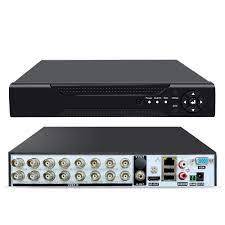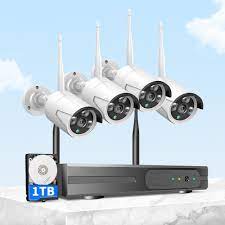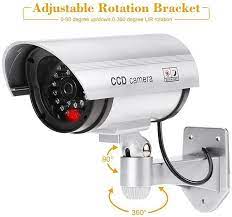A 16-Channel DVR: Enhancing Your Surveillance System
In today’s fast-paced world, security is a top priority for businesses and homeowners alike. Whether you want to protect your office premises, retail store, or residential property, having a reliable surveillance system is crucial. One key component that plays a vital role in any surveillance setup is the Digital Video Recorder (DVR).
When it comes to managing multiple cameras and recording high-quality video footage, a 16-channel DVR is an excellent choice. This powerful device allows you to connect up to 16 cameras simultaneously, providing comprehensive coverage of your surroundings.
One of the primary advantages of using a 16-channel DVR is its scalability. With the ability to connect multiple cameras, you can easily expand your surveillance system as your needs grow. This flexibility ensures that you can adapt your security setup to meet changing requirements without having to invest in additional recording devices.
Furthermore, a 16-channel DVR offers advanced features that enhance the overall functionality and effectiveness of your surveillance system. These features may include motion detection, scheduled recording, remote access, and real-time monitoring capabilities.
Motion detection technology is particularly useful as it allows the DVR to start recording only when motion is detected within the camera’s field of view. This feature not only saves storage space but also makes it easier to review specific events or incidents captured by the cameras.
Scheduled recording enables you to set specific time frames during which the DVR will record footage automatically. This feature is particularly handy for businesses that operate on fixed schedules or for homeowners who want their surveillance system active during specific hours.
Remote access is another valuable feature offered by most 16-channel DVRs. With this capability, you can access live video feeds and recorded footage from anywhere using a computer or mobile device connected to the internet. Remote access ensures that you can monitor your property even when you are away, providing peace of mind and allowing for prompt action in case of any suspicious activity.
Real-time monitoring is a crucial aspect of any surveillance system. A 16-channel DVR enables you to view live video feeds from multiple cameras simultaneously, giving you a comprehensive overview of your premises. This feature is especially beneficial for businesses that require constant monitoring of various areas or for homeowners who want to keep an eye on different parts of their property.
In conclusion, a 16-channel DVR is an essential component of a robust and effective surveillance system. Its ability to connect multiple cameras, scalability, advanced features like motion detection and remote access, and real-time monitoring capabilities make it an ideal choice for both commercial and residential applications.
Investing in a 16-channel DVR not only enhances the security of your property but also provides you with the peace of mind that comes from knowing you have reliable surveillance in place. So whether you are a business owner looking to protect your assets or a homeowner wanting to ensure the safety of your loved ones, consider incorporating a 16-channel DVR into your security setup for comprehensive coverage and peace of mind.
7 Essential Tips for Optimizing Your 16 Channel DVR
- Proper Placement
- Hard Drive Capacity
- Camera Compatibility
- Remote Viewing
- Network Connectivity
- User Interface
- Backup Options
Proper Placement
Proper Placement: Maximizing the Potential of Your 16-Channel DVR
When it comes to setting up a surveillance system with a 16-channel DVR, one crucial factor that often gets overlooked is the proper placement of cameras. The placement of your cameras plays a significant role in maximizing the potential of your DVR and ensuring comprehensive coverage of your premises.
Here are a few tips to consider when determining the ideal placement for your cameras:
- Identify critical areas: Begin by identifying the key areas that require surveillance. These may include entry points, parking lots, high-value assets, or areas prone to theft or vandalism. By focusing on these critical areas, you can ensure that you capture important events and activities.
- Consider camera angles: Determine the optimal angles for each camera to cover the desired area effectively. Different camera types have varying fields of view, so choose wisely based on your specific requirements. Adjusting camera angles can help eliminate blind spots and ensure maximum coverage.
- Height and mounting: The height at which you mount your cameras is essential for capturing clear and useful footage. Mounting cameras at an appropriate height helps prevent tampering while providing an unobstructed view of the area under surveillance.
- Lighting conditions: Take into account lighting conditions when placing your cameras. Ensure that there is adequate lighting in areas where you want clear video footage, especially during nighttime hours. Consider adding additional lighting sources if necessary to improve visibility.
- Concealment and visibility: Depending on your security needs, decide whether you want your cameras to be visible as a deterrent or concealed for discreet monitoring. Visible cameras can act as a deterrent to potential intruders, while hidden cameras can help gather evidence discreetly.
- Weatherproofing: If you plan to install outdoor cameras, make sure they are weatherproofed to withstand harsh environmental conditions such as rain, dust, or extreme temperatures. This ensures their longevity and reliability.
- Test and fine-tune: After installing your cameras, test each one to ensure they are capturing the desired footage and adjusting any settings as needed. Regularly check the camera feeds to identify any blind spots or areas that may require additional coverage.
By following these tips for proper camera placement, you can maximize the potential of your 16-channel DVR and create a robust surveillance system. Remember, a well-placed camera not only helps deter potential threats but also provides valuable evidence in case of incidents or security breaches.
Investing time and effort into planning the placement of your cameras will pay off in the long run by ensuring comprehensive coverage and enhancing the overall effectiveness of your surveillance system. So take the time to strategize and position your cameras strategically for optimal results.
Hard Drive Capacity
Hard Drive Capacity: Ensuring Ample Storage for Your 16-Channel DVR
When it comes to choosing a 16-channel DVR for your surveillance system, one crucial factor to consider is the hard drive capacity. The hard drive is where all the recorded footage from your cameras is stored, making it an essential component of your DVR setup.
Having sufficient storage space is vital to ensure that you can retain an adequate amount of video footage for future reference or evidence. The capacity of the hard drive determines how much data can be stored, so it’s important to select a size that meets your specific requirements.
The ideal hard drive capacity for a 16-channel DVR depends on various factors such as the number of cameras, recording resolution, frame rate, and retention period. Higher-resolution cameras and longer retention periods will require more storage space.
To determine the appropriate hard drive capacity for your needs, you should consider factors such as the number of days you want to retain recorded footage and the average amount of video data generated per day. It’s also essential to account for any additional storage requirements due to motion detection settings or continuous recording.
As a general guideline, it is recommended to have a minimum of 1TB (terabyte) of storage capacity for a 16-channel DVR. This should provide ample space for storing several days’ worth of high-quality video footage. However, if you have specific requirements or need longer retention periods, you may need to opt for larger hard drives such as 2TB or even higher capacities.
It’s important to note that while having a larger hard drive capacity allows for more extended recording times, it also requires careful management and regular maintenance. Regularly reviewing and deleting unnecessary footage or implementing intelligent storage management features can help optimize available storage space.
Additionally, some modern DVR systems offer options for expanding storage capacity by connecting external hard drives or utilizing network-attached storage (NAS) devices. These solutions provide flexibility and scalability, allowing you to increase storage capacity as needed without replacing the entire DVR unit.
In conclusion, choosing the right hard drive capacity is crucial for ensuring sufficient storage space for your 16-channel DVR. By considering factors such as the number of cameras, recording resolution, frame rate, retention period, and any additional storage requirements, you can select an appropriate capacity that meets your specific needs.
Having ample storage space allows you to retain recorded footage for an adequate duration and ensures that you have access to critical video data when needed. So, when setting up your 16-channel DVR system, make sure to pay attention to the hard drive capacity and choose a size that provides enough storage for your surveillance requirements.
Camera Compatibility
Camera Compatibility: A Crucial Consideration for Your 16-Channel DVR
When setting up a surveillance system with a 16-channel DVR, one crucial factor that often gets overlooked is camera compatibility. Choosing the right cameras that are compatible with your DVR is essential to ensure seamless integration and optimal performance.
A 16-channel DVR offers the capability to connect multiple cameras simultaneously, providing comprehensive coverage of your premises. However, not all cameras are created equal, and compatibility issues can arise if you don’t carefully select cameras that are compatible with your DVR.
The first step in ensuring camera compatibility is to check the specifications of your 16-channel DVR. Look for information on camera types and technologies supported by the DVR. Common types include analog, HD analog (AHD/TVI/CVI), and IP cameras. Understanding the supported camera types will help you narrow down your options when selecting cameras.
Next, consider factors such as resolution, frame rate, and compression formats supported by both the DVR and the cameras. It’s important to choose cameras that match or exceed the capabilities of your DVR to ensure optimal video quality and smooth recording.
Additionally, pay attention to the connectivity options provided by both the DVR and the cameras. Check if they use compatible connectors such as BNC or Ethernet ports for easy installation and setup.
Another aspect to consider is whether your 16-channel DVR supports Power over Ethernet (PoE) technology. PoE allows you to power IP cameras through a single network cable, simplifying installation and reducing cable clutter. If your DVR supports PoE, make sure to select PoE-enabled cameras for a hassle-free setup.
Lastly, keep in mind any specific features or functionalities you require from your surveillance system. Some advanced features like PTZ (Pan-Tilt-Zoom), audio recording, or built-in analytics may only be supported by certain camera models or brands. Ensure that these features align with both your surveillance needs and the capabilities of your 16-channel DVR.
By carefully considering camera compatibility, you can avoid potential issues such as connectivity problems, limited functionality, or subpar video quality. It’s always recommended to consult with a professional or the manufacturer to ensure you select cameras that are fully compatible with your 16-channel DVR.
Remember, a surveillance system is only as good as its components working together seamlessly. So, take the time to research and choose cameras that are compatible with your 16-channel DVR to create a robust and reliable surveillance solution for your home or business.
Remote Viewing
Remote Viewing: Keeping an Eye on Your Property Anytime, Anywhere
In today’s fast-paced world, it’s essential to have the ability to monitor your property even when you’re not physically present. Thanks to technological advancements, this is now possible with the help of a 16-channel DVR and its remote viewing feature.
Remote viewing allows you to access live video feeds and recorded footage from your 16-channel DVR using a computer or mobile device connected to the internet. This means that no matter where you are, as long as you have an internet connection, you can keep an eye on your property in real-time.
The convenience and peace of mind that remote viewing provides are invaluable. Whether you’re a business owner concerned about the security of your office premises or a homeowner wanting to ensure the safety of your family and belongings, remote viewing allows you to stay connected and informed at all times.
Imagine being able to check in on your surveillance cameras while away on vacation or monitor your business operations from the comfort of your home. With remote viewing, you can do just that. You can view live video feeds from multiple cameras simultaneously, giving you a comprehensive overview of what’s happening in and around your property.
The benefits of remote viewing go beyond just monitoring for potential threats or incidents. It also enables you to respond quickly in case of emergencies. For example, if your security system detects suspicious activity while you’re away, remote viewing allows you to assess the situation in real-time and take appropriate action by contacting authorities if necessary.
Additionally, remote viewing offers convenience when it comes to reviewing recorded footage. Instead of being limited to accessing recordings only when physically present at the DVR location, you can conveniently access and review footage remotely. This feature is particularly useful for businesses that need to investigate incidents or review employee behavior for security or operational purposes.
To enjoy the benefits of remote viewing with a 16-channel DVR, ensure that your surveillance system is set up correctly and securely. Consult with a professional installer or follow the manufacturer’s instructions to configure remote access properly, including setting up secure login credentials and enabling encryption to protect your footage from unauthorized access.
In conclusion, remote viewing is a game-changer when it comes to surveillance systems. With a 16-channel DVR and its remote viewing feature, you can keep an eye on your property anytime, anywhere. Whether you’re concerned about the security of your business or the safety of your home, remote viewing provides peace of mind by allowing you to stay connected and informed at all times. Embrace this technology and take control of your security with the power of remote viewing.
Network Connectivity
Network Connectivity: Empowering Your 16-Channel DVR
In today’s interconnected world, network connectivity plays a vital role in enhancing the functionality and capabilities of electronic devices. When it comes to your 16-channel DVR, having network connectivity opens up a world of possibilities and benefits.
Network connectivity enables your 16-channel DVR to communicate with other devices and systems, providing seamless integration and enhanced control. With this feature, you can access your DVR remotely from anywhere with an internet connection, allowing you to monitor your surveillance system on the go.
One of the significant advantages of network connectivity is the ability to view live video feeds and recorded footage from your DVR using a computer or mobile device. This remote access feature provides convenience and flexibility, enabling you to keep an eye on your property even when you are not physically present.
Moreover, network connectivity allows for easy sharing and collaboration. You can grant access to authorized individuals or security personnel, allowing them to view live feeds or review recorded footage as needed. This feature is particularly beneficial for businesses that require multiple stakeholders to have access to the surveillance system.
Another advantage of network connectivity is the ability to receive notifications and alerts directly on your mobile device or computer. By setting up email notifications or push notifications through dedicated apps, you can stay informed about any suspicious activity detected by your 16-channel DVR. This real-time information empowers you to take immediate action if necessary.
Furthermore, network connectivity opens up opportunities for integration with other security systems or smart home devices. You can connect your 16-channel DVR with alarm systems, access control systems, or even home automation systems for seamless operation and enhanced security measures. This integration allows for a comprehensive approach to safeguarding your property.
When considering network connectivity for your 16-channel DVR, it is essential to prioritize security measures as well. Ensure that you set strong passwords for remote access and regularly update firmware to protect against potential vulnerabilities. Additionally, consider using Virtual Private Network (VPN) technology for secure remote access to your DVR.
In conclusion, network connectivity is a game-changer when it comes to maximizing the potential of your 16-channel DVR. With remote access, easy sharing and collaboration, real-time notifications, and integration capabilities, network connectivity empowers you to have complete control over your surveillance system.
By leveraging network connectivity effectively, you can enhance the security of your property and gain peace of mind knowing that you can monitor and manage your surveillance system from anywhere at any time. So make sure to explore the network connectivity options available for your 16-channel DVR and unlock its full potential.
User Interface
The User Interface: Simplifying Surveillance with a 16-Channel DVR
When it comes to operating a surveillance system, ease of use and intuitive controls are essential. This is where the user interface of a 16-channel DVR plays a crucial role. The user interface serves as the gateway to accessing and managing your surveillance system effectively.
A well-designed user interface makes it easier for users to navigate through various settings, view live feeds, review recorded footage, and configure important parameters. With a 16-channel DVR, a user-friendly interface ensures that even those without technical expertise can efficiently operate the system.
One key aspect of a good user interface is its organization and layout. A clear and logical arrangement of menus and options simplifies the process of finding specific features or adjusting settings. This eliminates confusion and saves valuable time when setting up or managing your surveillance system.
Another important element is the visual presentation of information on the screen. A clean and uncluttered display ensures that users can easily understand the status of cameras, recording schedules, storage capacity, and other relevant details at a glance. Clear icons, labels, and intuitive symbols contribute to an efficient user experience.
Furthermore, a 16-channel DVR with a responsive user interface allows for smooth navigation between different screens or menus. Laggy or slow interfaces can be frustrating and hinder productivity when trying to access specific camera feeds or review recorded footage promptly.
Additionally, an intuitive playback feature within the user interface simplifies the process of searching for specific events in recorded footage. Users should be able to easily navigate through time stamps or use motion detection markers to quickly locate incidents they wish to review.
Remote accessibility is another aspect that enhances the usability of a 16-channel DVR’s user interface. With remote access capabilities via computer or mobile devices, users can conveniently monitor their surveillance system from anywhere at any time. This feature allows for quick response in case of emergencies or suspicious activities.
In conclusion, an intuitive and user-friendly interface is a key feature of a 16-channel DVR. It simplifies the operation and management of your surveillance system, ensuring that users can easily navigate through settings, view live feeds, review recorded footage, and configure important parameters. A well-designed user interface saves time, reduces frustration, and enhances overall productivity when it comes to monitoring and securing your premises.
So when choosing a 16-channel DVR for your surveillance needs, consider the quality of its user interface. A seamless and intuitive experience will empower you to efficiently manage your surveillance system, providing you with peace of mind and reliable security for your home or business.
Backup Options
Backup Options: Safeguarding Your Surveillance Footage with a 16-Channel DVR
When it comes to security, having a reliable surveillance system is crucial. A 16-channel DVR offers comprehensive coverage by allowing you to connect multiple cameras and record high-quality video footage. But what happens if there is a power outage or a technical glitch? That’s where backup options come into play.
A 16-channel DVR offers various backup options to ensure the safety and accessibility of your valuable surveillance footage. These backup options provide an extra layer of protection, giving you peace of mind and ensuring that your recorded videos are always accessible when needed.
One common backup option is the use of external storage devices such as USB drives or external hard drives. Many 16-channel DVRs have USB ports or SATA interfaces that allow you to connect these devices directly to the DVR. By regularly transferring your recorded footage onto these external storage devices, you create an additional copy that can be easily accessed and stored in a secure location.
Another popular backup option is cloud storage. With advancements in technology, many 16-channel DVRs now offer cloud storage capabilities. This means that your surveillance footage can be automatically uploaded and stored securely in the cloud. Cloud storage provides several advantages, including off-site storage, which protects your data from physical damage or theft at your premises. Additionally, it allows for remote access to your footage from anywhere with an internet connection, providing convenience and flexibility.
Some 16-channel DVRs also offer network-attached storage (NAS) support. NAS allows you to connect the DVR to a dedicated network storage device within your local network. This setup ensures that all recorded videos are saved directly onto the NAS device, providing centralized storage for easy access and management.
It’s important to note that while backup options are essential for safeguarding your surveillance footage, they should be implemented alongside other security measures such as password protection and encryption. By combining these measures, you can ensure the integrity and confidentiality of your recorded videos.
In conclusion, backup options are a critical aspect of any surveillance system, including those utilizing a 16-channel DVR. Whether it’s external storage devices, cloud storage, or network-attached storage, these backup options provide an additional layer of protection for your valuable footage. By implementing backup strategies alongside other security measures, you can safeguard your surveillance system and have peace of mind knowing that your recorded videos are secure and accessible when needed.




